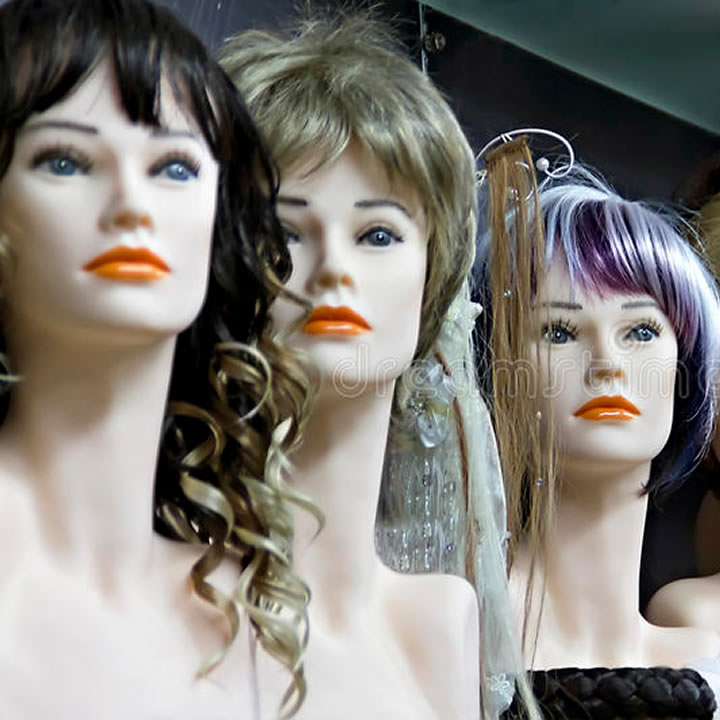Wearing your natural hair can get boring after some time, and you may want to change up your hair. Furthermore, even with the proper routine and the right products, as seen in this guide, having your natural hair open can strain it.
Benefits of Protective Hairstyles
As the name suggests, protective hairstyles do just that. They protect your hair from the constant washing, styling, and detangling of your hair. All these make your hair weaker, especially on the edges. They also protect you from the elements of weather.
Another reason why protective hairstyles are great is that they give your hair room to grow, as long as you do not put pressure on your edges.
Most protective hairstyles look good on anyone, and if you are adventurous, you can use different protective hairstyles in between your natural hairstyles. You can find one that fits your personality and makes you feel good.
Protective hairstyles over you a variety of options.
If you do not like having protective hairstyles for a long time, you can get a temporary hairstyle that will suit your needs for however short you need it. If you need to give your hair a longer break, there are still options you can choose from.
Protective Hairstyles
There are countless protective hairstyles. However, we will focus on the main styles that cater to every hair type and facial structure.
Braids
Braids are one of the most popular protective hairstyles.
Though cornrows and braids are usually used interchangeably, cornrows are actually a type of braiding hairstyle. Braids as a hairstyle have been around for thousands of years, with ancient North African paintings depicting women in cornrows.
Braids are a versatile protective style because they can be done in different ways.
Box braids. Box braids are individual strands of braids braided down in three cord strands. They get the name ‘box’ because the individual parts are separated into boxes. They come in different colors and can be chunky or small, depending on what you want.
Knotless box braids are becoming very popular because there is less pulling, and they project your hairline.
You can also put faux locs, which are crotched false dreadlocks.
Cornrows. Cornrows are braiding hairstyles where your hair is braided horizontally near the scalp. Just like with box braids, you can use your own hair or extensions. Cornrows can be mixed with box braids to make a funkier hairstyle.
There are other cornrow styles you can do, like Ghanaian, big cornrows, fishbone braids, Fulani braids, side braids, and thin and thick braids.
Twists
Twists or two-strand twists are similar to box braids. The hair is sectioned, and two strands of hair are twisted going down. You can also use your natural hair or work with extensions. There are different types of twists, such as Marley, flat, Havana, Senegalese, and kinky.
Bantu Knots
Bantu knots are a hairstyle that originates from the Zulu South African tribe, who are Bantus. They are done by twisting and wrapping chunks of hair in a spiral that looks like a mini-bun.
They can work on both long and short hair. However, they can cause breakage and hairline loss if done too tightly.
Wigs and Weaves
Wigs are an easy protective hairstyle as most of them already come styled. You can wear them with or without wig lines. In addition, you can easily interchange different wigs if you get tired of one style.
They also give you more room to breathe as you can remove them once you are home.
Weaves, on the other hand, are sewn into your hair. Just like wigs, they also come in different styles and colors.
Hair Wraps
Hair wraps are a great way to protect your hair. They come in different styles, fabrics, and colors. Not only are they very easy to work with, but they can also take your outfit a notch higher. You can use a regular scarf to create a headwrap or buy ready-made ones.
Though tying one can seem like a feat, there are various tutorials with cheat sheets on how to do it.
Preparing for a Protective Hairstyle
After choosing your protective hairstyle, you will need to prepare your hair to ensure your hair is adequately prepared.
- Wash and condition. If your style is worn for some time, make sure you wash your hair with a sulfate-free shampoo. Do not scrub while tugging your hair. Use a deep conditioner to moisturize your hair. You can also treat your hair or apply a hair mask to strengthen your hair before styling.
- Plan for your salon visit. Some styles take time while you are in and out with others.
- Advocate for yourself. Let your hair care provider know if they are tugging and pulling your hair, or if something feels too tight.
In Summary
As exciting as natural hair is, protective hairstyles are good for your hair and allow you to switch things up from time to time. They are an essential part of maintaining healthy hair. Having a protective hairstyle does not mean you should slack on your wash routine if you want a healthy scalp.

